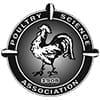Explore all the information on
Poultry egg quality
Egg quality defines those characteristics of an egg that affect consumer acceptability and preference. Components of quality include shell quality and interior egg quality for shell eggs, and interior egg quality for further processed eggs. The quality of the egg once it is laid cannot be improved. Hence, its maintenance is mostly a preventive process. Egg quality is influenced by several factors including rearing, temperature, humidity, handling, storage, and egg age. Shell quality: There are five major classes of shell defects: integrity, texture, shape, color, and cleanliness. Internal egg quality involves functional, aesthetic and microbiological properties of the egg yolk and albumen. The proportions of components for fresh egg are 32% yolk, 58% albumen and 10% shell. Regarding exterior egg quality, the shell of each egg should be smooth, clean and free of cracks. The eggs should be uniform in colour, size and shape.
Introduction Protein is a major component of animal tissues and products. Thus, adequate intake of dietary protein is essential to optimise growth, production performance, and feed efficiency in poultry. Soybean meal is most commonly used protein source and used around 20-30 % in poultry feed. Now days protein feed ingredients like soybean meal are consistently increasing in cost; so protein has become one of the most expensive nutrients in poultry diet. After feed consumed by...
Comments : 1
Recommendations: 1
Introduction Dermanyssus gallinae (de Geer, 1778), often called the poultry red mite (PRM), is highly prevalent in most parts of the world, especially in farms of laying hens (Sparagano et al., 2009; Sigognault-Flochlay et al., 2017). In uncontrolled conditions PRM populations can grow to very high numbers, commonly reaching up to 50,000 parasites per bird (Sparagano et al., 2014). Especially at night, adult PRM and nymph stages bite hens to suck blood (Sparagano et al.,...
Comments : 0
Recommendations: 0
Join us virtually the week of August 15, 2022 for the Shell Egg Academy (SEA), which will provide interactive class sessions on egg quality and food safety for farmers and egg companies producing and processing table eggs. Sessions will be held on Zoom.
Virtual SEA will...
Comments : 0
Recommendations: 1
Eggs are an incredible source of nutrients and a valued food worldwide. With their unique nutritional profile, eggs are part of a sustainable solution to feeding the world. According to Urner Barry’s Reporter, U.S. consumers make purchases based on their understanding of on-farm...
Comments : 0
Recommendations: 0
Comparative life cycle assessment of amino acid use in pig, broiler and egg production. In 2015, Evonik reported a comparative life cycle assessment (LCA) of methionine, lysine, threonine, tryptophan and valine in broiler and pig...
Comments : 0
Recommendations: 4
The eggshell consists of 95% calcium carbonate, the necessary calcium is obtained from the feed or the bones of the layer. Calcium is absorbed in the intestine and its absorption and metabolism are regulated by vitamin D. To avoid related problems, regular supplementation with calcium and vitamin D3 is recommended. PlusVet Animal Health developed PhytoMax © which is a combination of vitamins, calcium in chelate form, microminerals and essential oils to add to the drinking water of layers and...
Comments : 1
Recommendations: 0
INTRODUCTION In recent years, interest in the welfare of hens has been increasing. The public and activist groups than by scientific evidence have influenced much of current European legislation on the welfare of laying hens more. These groups proposed that the European Union abolish the cage housing system by the enriched cage system (750 cm 2 of surface per bird); where the hens also have perches and nesting material (Bulmer y Gil, 2008). In this regard, in the...
Comments : 0
Recommendations: 0
New results on the effects of Progres® in laying hens were recently presented in the 7th International Conference on Poultry Intestinal Health (ICPIH2022), Cartagena De Indias,...
Comments : 0
Recommendations: 1
We use an equal proportion of water an formalin, 8-10 hours after egg transfer, one container in front of hatcher and 1 in the back. There is some problems such as : Hatch delay, Ventilation adjusment, .... whats your solutions for day-old chick color uniformity? ...
Comments : 0
Recommendations: 0
The eggshell provides mechanical protection to the content of the egg and acts as a barrier against microbial infections. It should look clean, smooth, homogeneous, and free of cracks. Cracked or broken eggs are prone to microbial contamination, posing a threat to consumer health (table eggs) or having a significantly reduced hatchability (fertile eggs). In general, 3% to 6% of the total eggs laid are discarded due to breakage. ...
Comments : 0
Recommendations: 0
I. EPIDEMIOLOGY OF SALMONELLA INFECTIONS Most Salmonella strains belong to non-host specific or broad-host range serotypes, and thus can colonize the gut of many animal species, including humans. In contrast to host-specific serotypes that cause septicemia and severe disease (typhoidal serotypes), the broad-host range serotypes are asymptomatically colonising the host in most cases, but can cause diarrhoea when high numbers of bacteria are orally take up at once, as is...
Comments : 0
Recommendations: 0
INTRODUCTION The global production of chicken eggs is constantly increasing, e.g., 37.4 million tons of chicken-eggs were produced in 1990, and 80 million tons in 2018. The WHO has estimated that production will have to increase four-fold to meet the global demand for chicken eggs in the next two decades (1, 2). Hence, the poultry industry must be increasingly efficient despite being one of the most efficient and technologically advanced animal production activities...
Comments : 0
Recommendations: 0
Chicken eggs for human consumption are exceedingly nutritious, palatable, reasonable priced, and commonly accessible around the world. There is an increasing demand for enriched and functional foods for human consumption that provide various beneficial effects in addition to the nutritive and non-nutritive compounds important to human health 1 . Eggs can be enriched with certain nutrients through dietary manipulation to create speciality or functional food products that provide...
Comments : 0
Recommendations: 1
The modern broiler chick spends 50% of its life in an embryonic state. It is therefore important to ensure that adequate nutrients are available to the developing embryo, which is completely reliant on the diet fed to the breeder hen. Consequently, the physiological status of the chick at hatching is greatly influenced by the nutrition of the breeder hen. The nutrient supply to the broiler breeder is a sum of the actual nutrient content of the diet and the quantity or volume of feed...
Comments : 3
Recommendations: 1
Oscar Garrison (United Egg Producers) talks to Sam Shafer (PSA) about consumer preferences and challenges in the industry. Let's Squawk About It is a monthly interview segment by the Poultry Science Association....
Comments : 0
Recommendations: 1
Darrin Karcher (Purdue University) talks to Sam Shafer (PSA) about consumer demands, poultry welfare, and changes in the industry. Let's Squawk About It is a monthly interview segment by the Poultry Science Association....
Comments : 0
Recommendations: 1
During IPPE 2022 in Atlanta, Edgar Oviedo-Rondón (North Carolina State University) talked about two projects where they worked together with companies to improve their decision-making process by using data. You can find more information on this program here: https://poultry.ces.ncsu.edu/the-poultry-decision-makers-workshop-series/....
Comments : 1
Recommendations: 1
INTRODUCTION Hemp ( Cannabis sativa L.) is an annual herbaceous plant belonging to the family Cannabinaceae (Turner et al., 1979), traditionally grown for fiber and seed production. Whole hemp seed contains approximately 25% crude protein, 33 to 35% oil, and 34% carbohydrate, in addition to a broad range of vitamins and minerals (Darshan and Rudolph, 2000; Callaway, 2004; House et al., 2010). Hemp seed oil contains 75 to 80% polyunsaturated fatty acids (PUFA),...
Comments : 0
Recommendations: 0
INTRODUCTION As a nonpolar amino acid, Valine (Val) is one of the most hydrophobic amino acids (Brosnan and Brosnan, 2006). Val, leucine, and isoleucine are called branched chain amino acids due to the branched chain structures of their R groups. In animals, Val serves as a precursor for the synthesis of protein and other amino acids (Ferrando et al., 1995). As a glucogenic amino acid, Val is a substrate for glutamine synthesis which is involved in the Krebs cycle (Wu,...
Comments : 0
Recommendations: 2
by Sam Shafer
Looking for a golden goose? Try a goose that’s two years old. In a recent study, researchers with the Heilongjiang Academy of Agricultural Sciences found that goose egg yolks (the most valuable part of the egg) tend to be at their largest following the goose’s second laying season.
The Journal of Applied Poultry Research study links a...
Comments : 0
Recommendations: 0










.jpg&w=3840&q=75)






.jpg&w=3840&q=75)

















